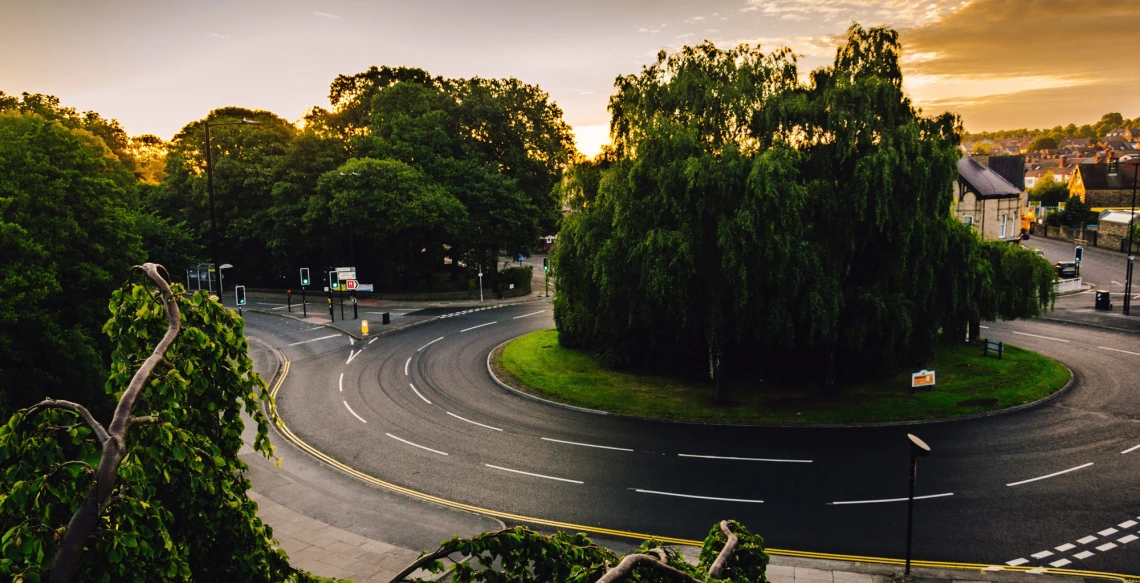ICOSSE-11 Report: Roundabouts Save Lives and the Environment
Roundabouts reduce accidents, injuries and traffic flow, thus reducing delays, fuel consumption and air pollution. They are also more visually pleasing than arrays of lights and signs, which tend to distract drivers.

No description provided
European-style traffic roundabouts could soon become commonplace in the U.S. if local governments striving to improve sustainability in their communities follow the example of Carmel, Indiana.
Speaking at the Jan. 10 plenary session of the ICOSSE-11 conference in Tucson, Ariz., Jay Clare, vice president of infrastructure and environment at URS Corp., cited the rapidly growing Indiana city's roundabouts as exemplars of sustainable infrastructure.
The University of Arizona College of Engineering is hosting ICOSSE-11, the Second International Congress on Sustainability Science and Engineering, at the JW Marriott Starr Pass Resort and Spa in Tucson, Ariz.
"The mayor of Carmel, Indiana, made a case for installing roundabouts by promoting their environmental friendliness, safety benefits, cost savings, and ability to smooth traffic flow," Clare said. "They have over 40 roundabouts ... with 20 more planned and funded over the next three years."
Clare used the Carmel roundabouts example to illustrate a section of his talk on the Star Community Index, which he described as "a framework for gauging the sustainability and livability of communities."
From Evolution to Revolution
The Star Community Index, to be launched this year, has been developed through a partnership between the U.S. Green Building Council, the Center for American Progress, and ICLEI-Local Governments for Sustainability, which until 2003 was known as the International Council for Local Environmental Initiatives.
In his address to ICOSSE delegates, Clare opined that the architecture, engineering and construction industry was still evolving in terms of how it addressed sustainability. He argued that the LEED rating system, which stands for Leadership in Energy and Environmental Design, was not sufficient to advance infrastructure sustainability issues, unlike newer programs such as The Star Community Index.
"The Star Community Index is really trying to transform how local governments set priorities and implement policies and practices to improve sustainability, much like LEED has done for the building market," Clare said.
Also speaking at ICOSSE's opening plenary session was David Parekh, vice president and research director at United Technologies Corp., who focused his talk on energy efficiency, or how to reduce the amount of energy we waste in both production and consumption.
Even without switching to renewable energy sources, argued Parekh, there are huge energy savings to be made by making energy production more efficient, and by changing our energy-use habits. "If we can reduce the impact on the demand side, while working in concert on the supply side," Parekh said. "We can, before all of us retire, have a very noticeable impact and not simply kick it down the road for our kids and grandkids."
New Age
Another ICOSSE speaker, Paul Bryan, head of the U.S. Department of Energy's biomass program, began his talk on biofuels by paraphrasing Sheikh Zaki Yamani, a 1970s Saudi Arabian oil minister, who famously said: "The Stone Age did not end for a lack of stone, and the Oil Age will end long before the world runs out of oil."
Bryan hoped that statement was true. "If we wait until the world runs out of oil, the lack of oil is going to be the least of our problems," he said. However, referring to "unconventional" sources of hydrocarbon fuels, such as gas hydrates, Bryan noted that "there are plenty of hydrocarbons to go around."
Hydrocarbon supply is not the problem, Bryan said. "The problem is what happens when we burn them."
Bryan returned to a persistent theme of this opening session at ICOSSE, that sustainability must be deeply embedded in every aspect of the science, engineering and policy that will shape how we learn to control our profligate energy use.
Biofuels are a sustainable energy source, Bryan said, but if there is some unsustainable practice in their production, the entire value chain is only as sustainable as its weakest link. "If we have biofuels that are sustainable in every other way except they use all the world's phosphorus in the next 20 years, that's the end of biofuels."

